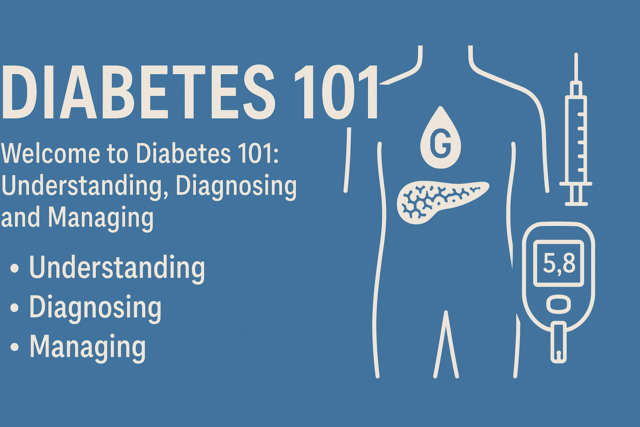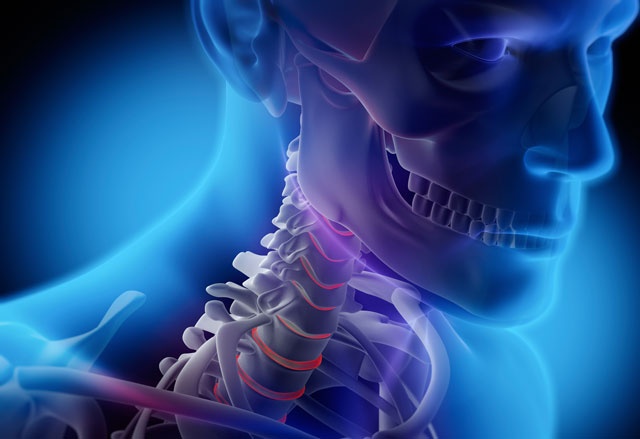Online Class: HIPAA Compliance 101

no certificate
with CEU Certificate*
-
12Lessons
-
17Exams &
Assignments -
3,101Students
have taken this course -
6Hours
average time -
0.6CEUs
Course Description
Ensuring Privacy, Portability, and Protection in Healthcare
HIPAA, or the Health Insurance Portability and Accountability Act, isn't just another piece of legislation. It's the backbone of healthcare data protection and insurance portability in the U.S., representing a paradigm shift in the approach to safeguarding patient information and ensuring continuity in healthcare. Dive deep into the intricacies of HIPAA with our meticulously curated course designed for healthcare professionals, administrators, and anyone keen to explore this crucial aspect of modern healthcare.
Why this Course is a Must-Have:
-
Historical Context: Traverse the legislative journey of HIPAA, understanding its roots, motivations, and the transformative changes it brought to the healthcare sector.
-
Detailed Modules: Enjoy a granular breakdown of HIPAA's components, ensuring a comprehensive understanding of its dual facets: Health Coverage Access and Administrative Simplification.
-
Hands-On Learning: Our course doesn't just feed you information. Through interactive modules, quizzes, and practical scenarios, you'll be equipped to navigate the intricate maze of HIPAA requirements with confidence.
Inside HIPAA:
-
Title 1 - Health Coverage Access and Portability: Discover how HIPAA transformed the insurance landscape, guaranteeing individuals' rights to coverage even amidst job changes, and especially vital for those with pre-existing conditions. Revisit a time when changing jobs could mean risking health coverage, understand the challenges faced, and appreciate the monumental changes that Title 1 ushered in.
-
Title 2 - Administrative Simplification: Enter the world of patient data protection. Learn the significance of protecting sensitive patient health records, insurance claims, and the evolution of regulations governing electronic patient record systems. The birth of Title 2 wasn't straightforward, and its evolution is a testimony to the dynamic nature of health information needs and technology's role.
-
From State to Federal: Before HIPAA's universal standards, there were fragmented state-level privacy laws. Delve into why a unified, federal approach was essential and how it provided much-needed clarity and strength to data privacy protocols.
-
Streamlining Medical Administration: Understand how HIPAA addressed the complexities that plagued clinics and medical establishments, standardizing electronic patient records and simplifying medical administration processes.
-
Privacy Rule Evolution: Track the changes in the "Privacy Rule" since its inception, exploring the reasons for its iterations and the resulting impact on healthcare practices and patient rights.
-
Understanding PHI: Unravel the nuances of Protected Health Information (PHI), its importance, the restrictions surrounding it, and the rights patients have regarding their data.
Conclusion:
In an era of digital transformation, where data breaches make headlines, understanding HIPAA isn't just essential—it's critical. This course isn't just about grasping a piece of legislation; it's about appreciating the sanctity of patient information, the fundamental rights to health coverage, and the ethics of healthcare.
Join us in this enlightening journey through HIPAA, refining your knowledge, honing your skills, and upholding the highest standards of healthcare practices. Become not just a healthcare professional but an ambassador for patient rights and data protection.
- Completely Online
- Self-Paced
- Printable Lessons
- Full HD Video

- 6 Months to Complete
- 24/7 Availability
- Start Anytime
- PC & Mac Compatible
- Android & iOS Friendly
- Accredited CEUs

Course Lessons
Lesson 1. HIPAA's Journey: Ensuring Privacy and Portability in Health Coverage
With its establishment, HIPAA revolutionized health insurance, making it possible for workers to change jobs without losing coverage due to pre-existing conditions. It ensured that life events like marriage or childbirth would not lead to coverage gaps, providing greater security and confidence for individuals transitioning between jobs.Lesson 2. HIPAA's Reach: Covered Entities and Their Responsibilities
Business associates, though not covered entities, still adhere to HIPAA's rules if they handle PHI, working under contracts that define data usage and security responsibilities. Both covered entities and their associates play critical roles in safeguarding electronic health information, ensuring compliance, and protecting patient privacy within the healthcare sector.Lesson 3. Exploring PHI: Vital Steps for Compliance with HIPAA Standards
The lesson delves into the critical nature of Protected Health Information (PHI), highlighting HIPAA's role in safeguarding it amidst the rapid digitalization of health data. It clarifies PHI's definition, how it is protected under HIPAA, and its significance in healthcare scenarios.Lesson 4. When Privacy Laws Flex: Essential PHI Disclosures Under HIPAA
HIPAA allows incidental PHI disclosures under reasonable safeguards, recognizing the challenges of maintaining total privacy in healthcare settings. The minimum necessary rule ensures only essential PHI is shared, reducing exposure risks.Lesson 5. Understanding Patient Consent in Healthcare: A Guide to HIPAA Regulations
Patient consent is integral to HIPAA’s protocol for using Personal Health Information outside typical healthcare scopes, anchoring privacy protection. Understanding necessary forms of authorization, particularly in research and marketing, helps healthcare entities align with HIPAA while honoring patient privacy.Lesson 6. The Essence of 'Minimum Necessary': Enhancing Data Privacy in Healthcare
Role-based access controls in healthcare organizations limit PHI access to only what employees need for their job functions, enhancing patient privacy. Routine and non-routine disclosures are managed through clear processes to ensure only the minimum necessary information is shared.Lesson 7. Empowering Patients: Understanding Their HIPAA Privacy Rights
Healthcare providers and health plans must issue Privacy Practices Notices as per HIPAA regulations, ensuring patient awareness of their rights and data handling processes. These include details on PHI usage, authorization requirements, and patient rights, aiming to enhance patient trust and compliance verification.Lesson 8. Accessing, Amending, and Accounting for Your Health Records
Patients have the critical right to access and amend their PHI, as outlined by HIPAA, fostering a transparent and trusted healthcare environment. Understanding disclosures and requesting usage restrictions are key components of patient empowerment covered in this lesson.Lesson 9. HIPAA Compliance Essentials: A Guide for Healthcare Administrators
This lesson emphasizes building a culture of compliance and trust in healthcare through active implementation of HIPAA policies, training, and violation management. It outlines steps for developing policies, appointing a compliance officer, and securing both physical and digital patient records.Lesson 10. HIPAA Administrative Simplification Explained
Central to HIPAA's Administrative Simplification is the standardization of healthcare transactions, fostering efficient exchanges between providers and insurers. This lesson highlights transaction standards like 5010 and NCPDP 3.0, which streamline claims processing and reduce errors.Lesson 11. HIPAA Enforcement: Protecting Patient Privacy through Regulations
HIPAA compliance protects patient data through structured audits and investigations by the OCR, focusing on Privacy and Security Rule adherence. Penalties range from fines to corrective mandates, reflecting the importance of robust risk assessments and security policies.Lesson 12. HIPAA Essentials
The lesson provides a practical exploration of HIPAA, offering insights into its real-world application and enforcement. With examples of compliance challenges and OCR's investigative role, students learn the importance of privacy laws in transforming healthcare.
Learning Outcomes
- Define the impact of HIPAA on health insurance portability and how it revolutionized protections for individuals with pre-existing conditions.
- Identify key provisions of Title II of HIPAA, including patient privacy rights, data security standards, and the enforcement of penalties for violations.
- Define the term 'covered entity' under HIPAA by identifying the types of organizations that must comply with the privacy and security rules.
- Differentiate between covered entities and business associates by describing their roles and responsibilities in handling personally identifiable health information under HIPAA.
- Define the key identifiers that qualify as Protected Health Information under HIPAA and explain their significance in healthcare settings.
- Demonstrate the process of de-identifying health information using the Safe Harbor Standard, and identify scenarios where PHI can be shared with patient consent.
- Define the key exceptions under which Protected Health Information (PHI) can be disclosed without patient consent, including Treatment, Payment, and Healthcare Operations (TPO) scenarios.
- Explain the role of verbal consent and medical judgment in disclosing PHI during emergency or incapacitation situations, in line with HIPAA regulations.
- Define the specific circumstances under which patient authorization is required for the disclosure of Protected Health Information (PHI) under HIPAA.
- Identify the essential components that must be included in a valid patient authorization form to comply with HIPAA regulations.
- Identify and distinguish between routine and non-routine disclosures of Protected Health Information (PHI) according to compliance with 'minimum necessary' requirements.
- Define and explain the 'minimum necessary' standard as outlined in the HIPAA Privacy Rule and its application in healthcare data sharing.
- Define the required components of a HIPAA-compliant Privacy Notice, including patient rights and obligations of healthcare providers.
- Demonstrate mastery of lesson content at levels of 70% or higher.
Additional Course Information

- Document Your Lifelong Learning Achievements
- Earn an Official Certificate Documenting Course Hours and CEUs
- Verify Your Certificate with a Unique Serial Number Online
- View and Share Your Certificate Online or Download/Print as PDF
- Display Your Certificate on Your Resume and Promote Your Achievements Using Social Media

Choose Your Subscription Plan
No Certificate / No CEUs
This course only
| Includes certificate | X |
| Includes CEUs | X |
| Self-paced |

|
| Instructor support |

|
| Time to complete | 6 months |
| No. of courses | 1 course |
Certificate & CEUs
This course only
| Includes certificate |

|
| Includes CEUs |

|
| Self-paced |

|
| Instructor support |

|
| Time to complete | 6 months |
| No. of courses | 1 course |
Certificates & CEUs
Includes all 600+ courses
| Includes certificate |

|
| Includes CEUs |

|
| Self-paced |

|
| Instructor support |

|
| Time to complete | 12 Months |
| No. of courses | 600+ |
Certificates & CEUs
Includes all 600+ courses
| Includes certificate |

|
| Includes CEUs |

|
| Self-paced |

|
| Instructor support |

|
| Time to complete | 24 Months |
| No. of courses | 600+ |
Student Testimonials
- "All good" -- Kyle B.
- "Instructor was very quick to respond." -- Lynn E.
- "Good job. I also liked the extra resources offered with the course material." -- Shannon N.
- "It was great having an instructor with the CPC designation. It gave me confidence that this course is necessary. The written assignments forced me to pay attention to the detail of what I was reading and the exams reinforced my learning of the information." -- Carolyn D.
- "Thank you. The whole class was helpful." -- Diane L.
- "[Instructor] responded to all of my emails and helped me to understand the reasoning for each correct answer." -- Palmyra S.
- "Course was very informative and not terribly difficult I was worried I would struggle with it but I did not. Instructor was on top of the work never took her very long to grade things. I found the videos extra helpful because I would read the material and then watch them and it helps me get all the info thoroughly down pat." -- Josie F.
- "The way HIPAA was broken down into digestible chunks was very helpful." -- Charles F.
Related Courses
-
 74 hours
7.4 CEUs
Medical Billing and Coding Course Bundle
+ More Info
74 hours
7.4 CEUs
Medical Billing and Coding Course Bundle
+ More Info
-
 7 hours
0.7 CEUs
Caring for Seniors
+ More Info
7 hours
0.7 CEUs
Caring for Seniors
+ More Info
-
 7 hours
0.7 CEUs
Alzheimer's Disease 101
+ More Info
7 hours
0.7 CEUs
Alzheimer's Disease 101
+ More Info
-
 14 hours
1.4 CEUs
Medical Terminology for Medical Coders
+ More Info
14 hours
1.4 CEUs
Medical Terminology for Medical Coders
+ More Info
-
 5 hours
0.5 CEUs
End of Life Care
+ More Info
5 hours
0.5 CEUs
End of Life Care
+ More Info
-
 10 hours
1.0 CEUs
Understanding Addictions
+ More Info
10 hours
1.0 CEUs
Understanding Addictions
+ More Info
-
 18 hours
1.8 CEUs
Medical Terminology 101
+ More Info
18 hours
1.8 CEUs
Medical Terminology 101
+ More Info
-
 5 hours
0.5 CEUs
Aging and Long Term Care
+ More Info
5 hours
0.5 CEUs
Aging and Long Term Care
+ More Info
-
 20 hours
2.0 CEUs
Introduction to Medical Coding
+ More Info
20 hours
2.0 CEUs
Introduction to Medical Coding
+ More Info
-
 17 hours
1.7 CEUs
ICD-10: Medical Coding
+ More Info
17 hours
1.7 CEUs
ICD-10: Medical Coding
+ More Info
-
 2 hours
0.2 CEUs
Careers in Healthcare
+ More Info
2 hours
0.2 CEUs
Careers in Healthcare
+ More Info
-
 6 hours
0.6 CEUs
Advocacy for Elderly Patients
+ More Info
6 hours
0.6 CEUs
Advocacy for Elderly Patients
+ More Info
-
 12 hours
1.2 CEUs
Microbiology Mastery: Unlocking the Foundations of Life
+ More Info
12 hours
1.2 CEUs
Microbiology Mastery: Unlocking the Foundations of Life
+ More Info
-
 8 hours
0.8 CEUs
Medical Office Management
+ More Info
8 hours
0.8 CEUs
Medical Office Management
+ More Info
-
 17 hours
1.7 CEUs
Medical Terminology 201
+ More Info
17 hours
1.7 CEUs
Medical Terminology 201
+ More Info
-
 7 hours
0.7 CEUs
Understanding Concussions
+ More Info
7 hours
0.7 CEUs
Understanding Concussions
+ More Info
-
 4 hours
0.4 CEUs
Diabetes 101
+ More Info
4 hours
0.4 CEUs
Diabetes 101
+ More Info






